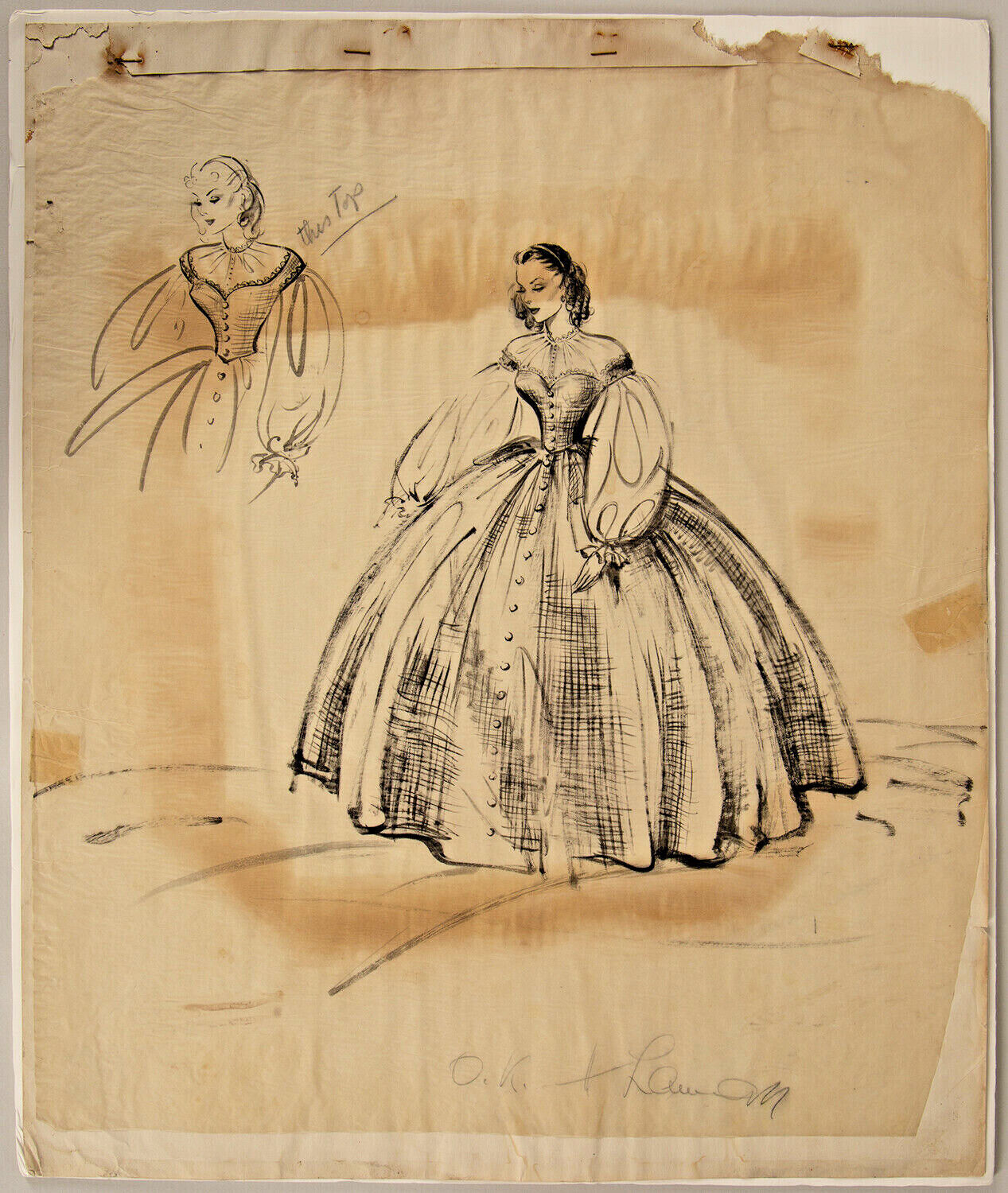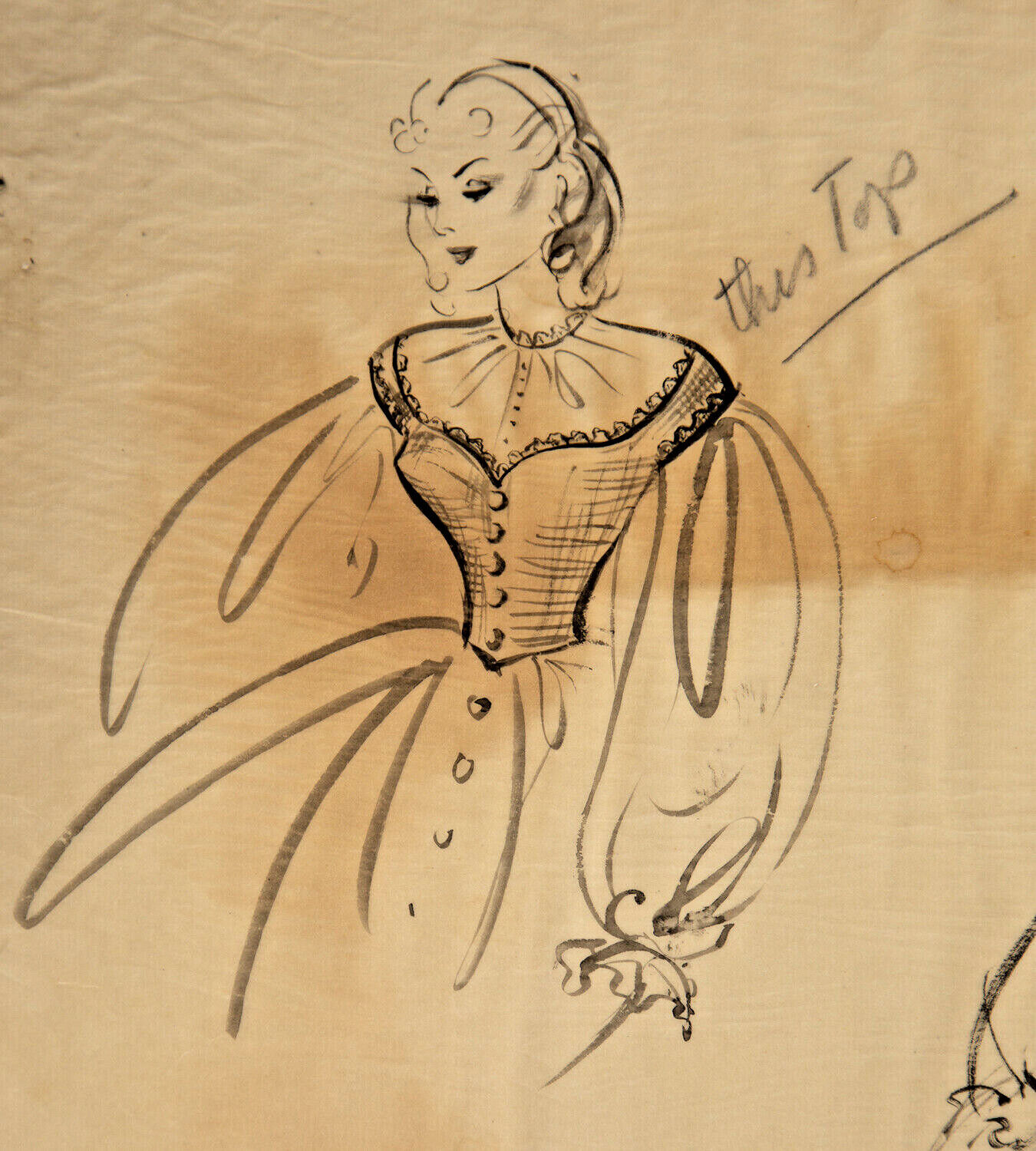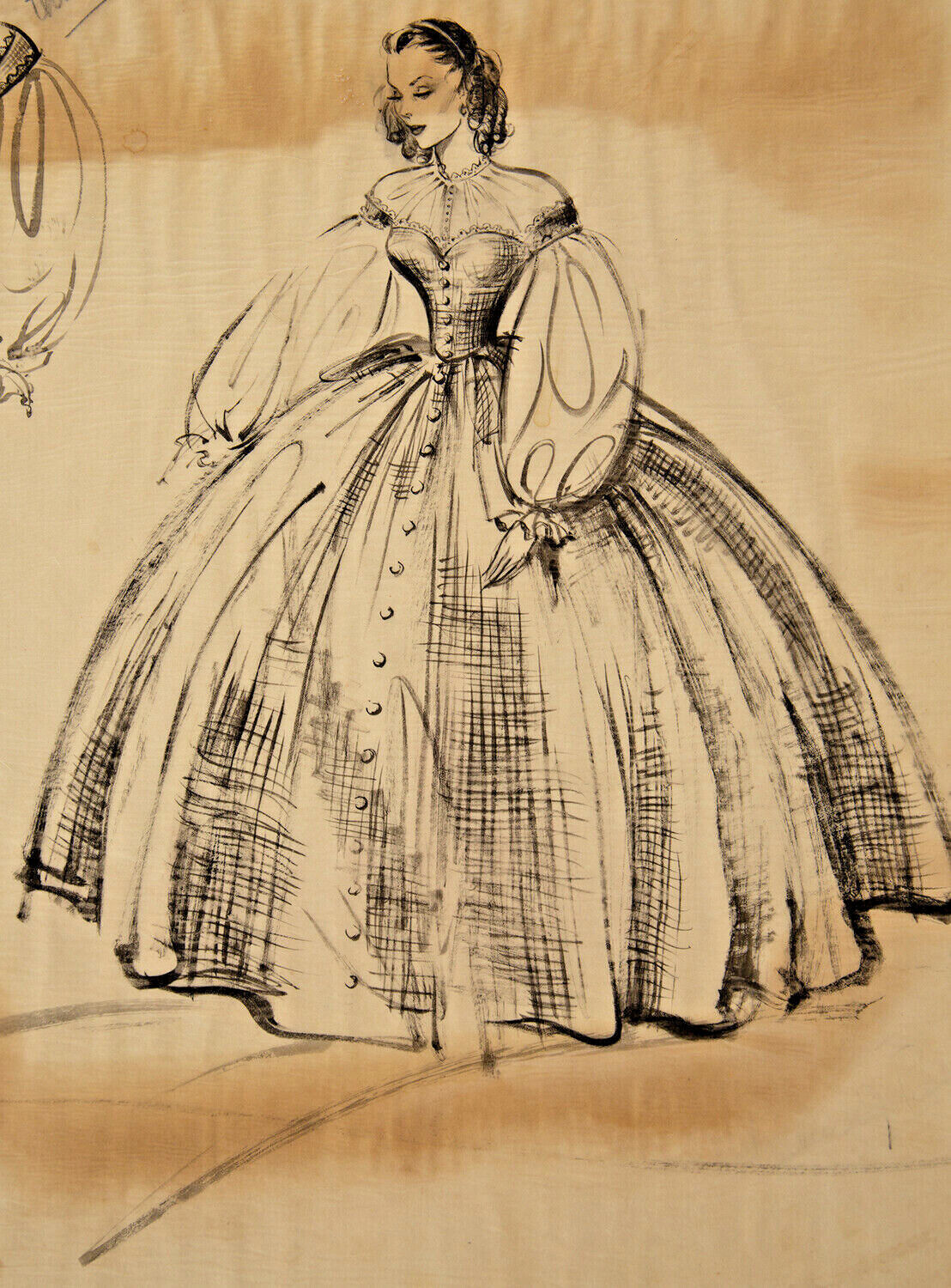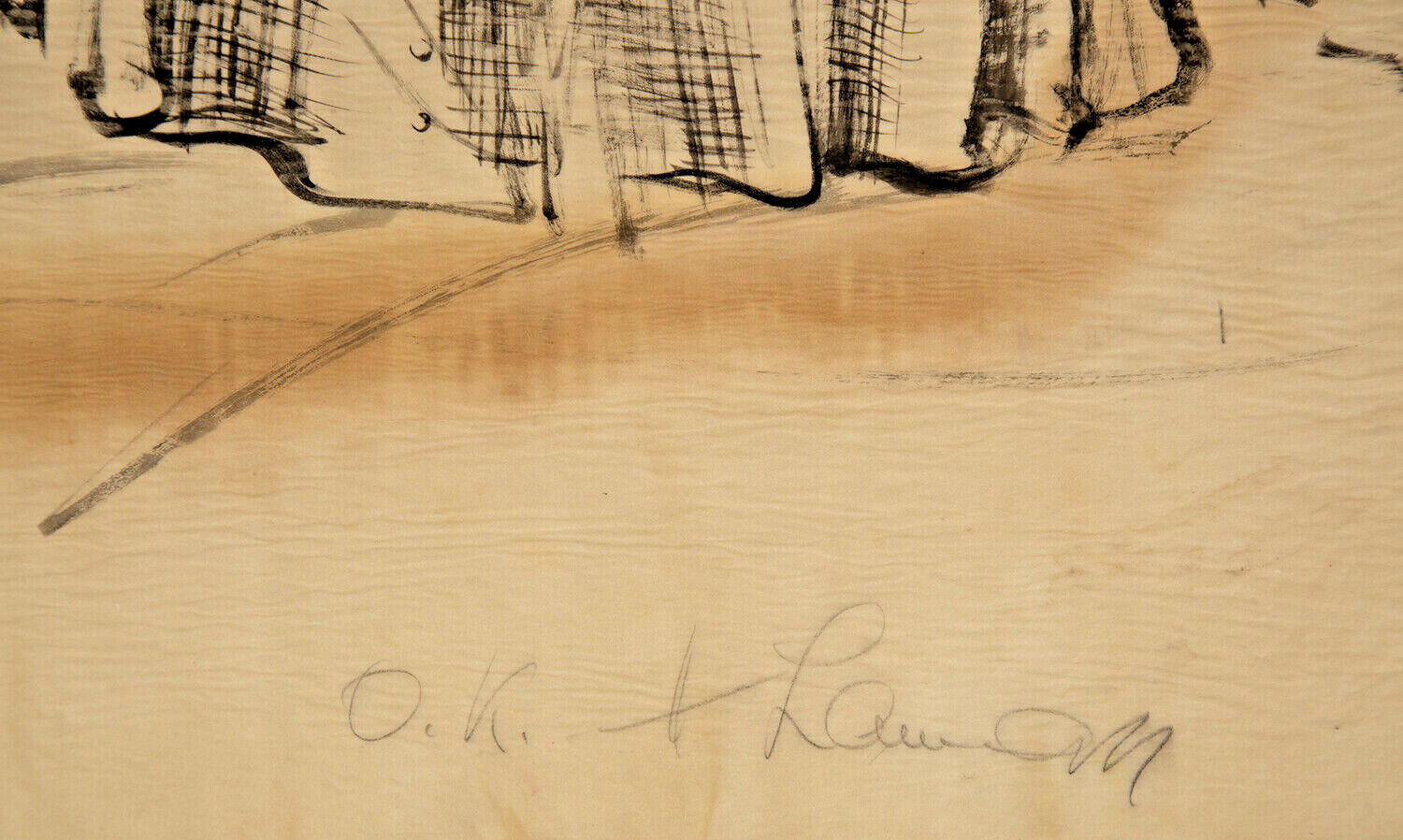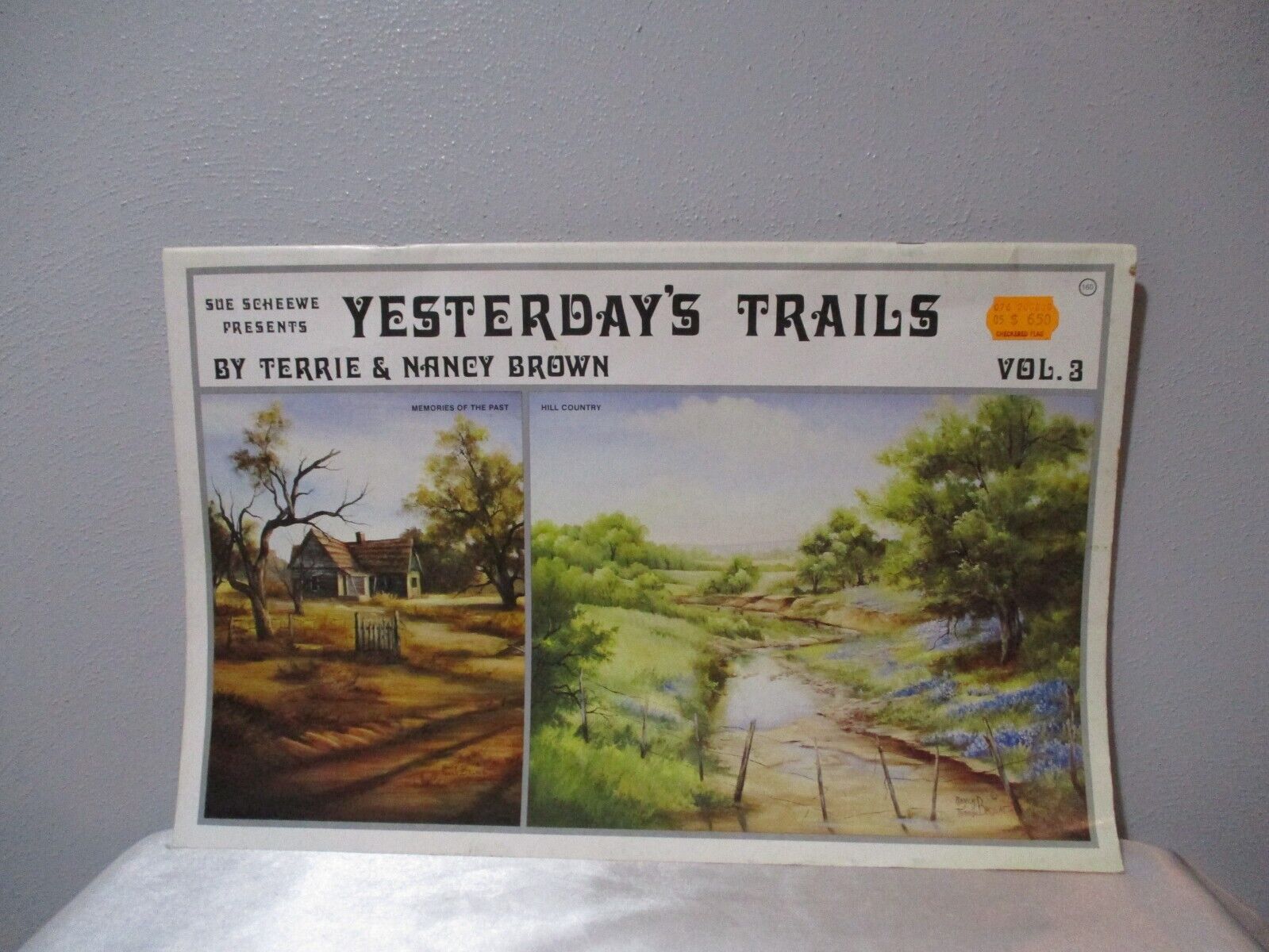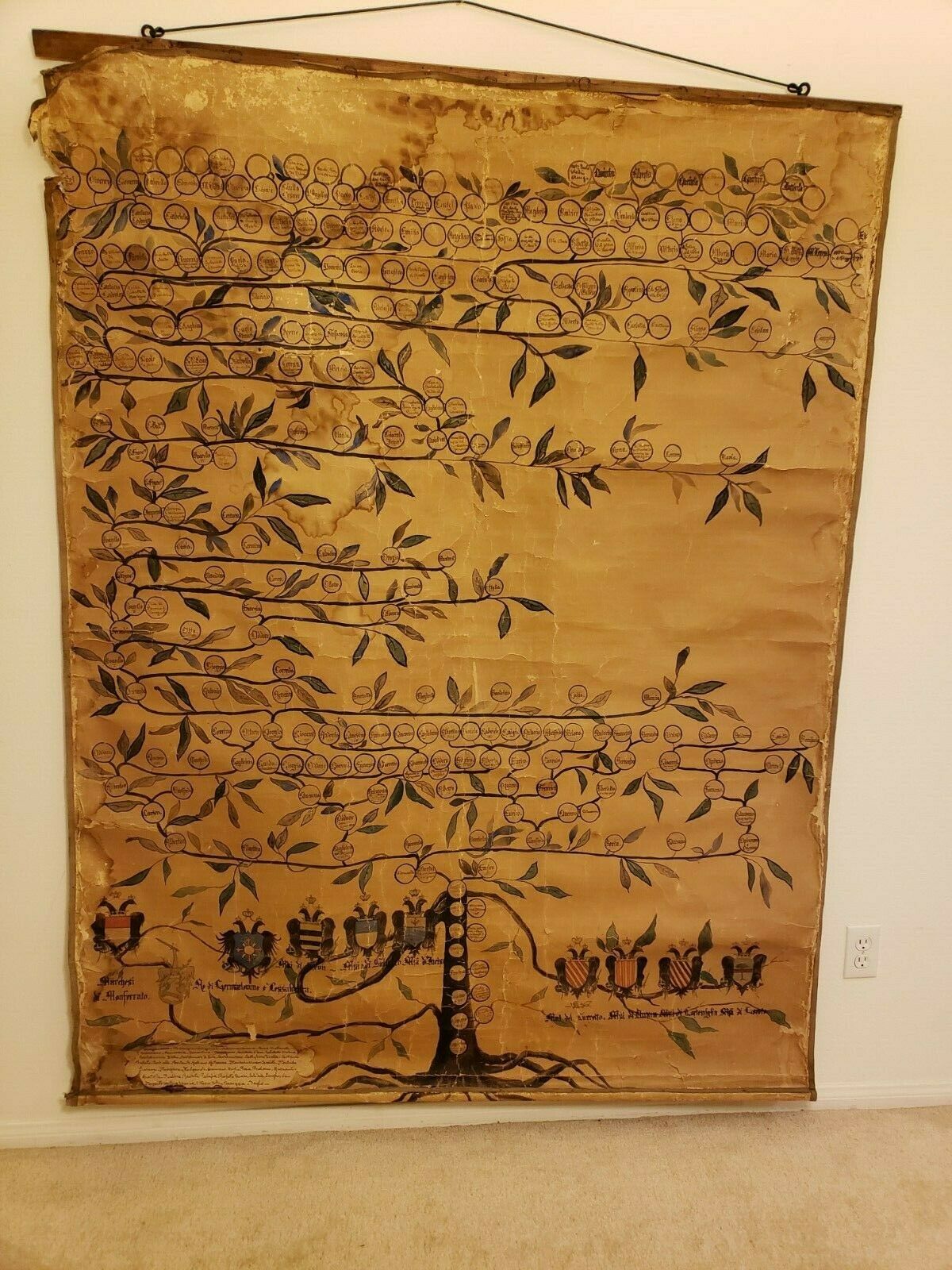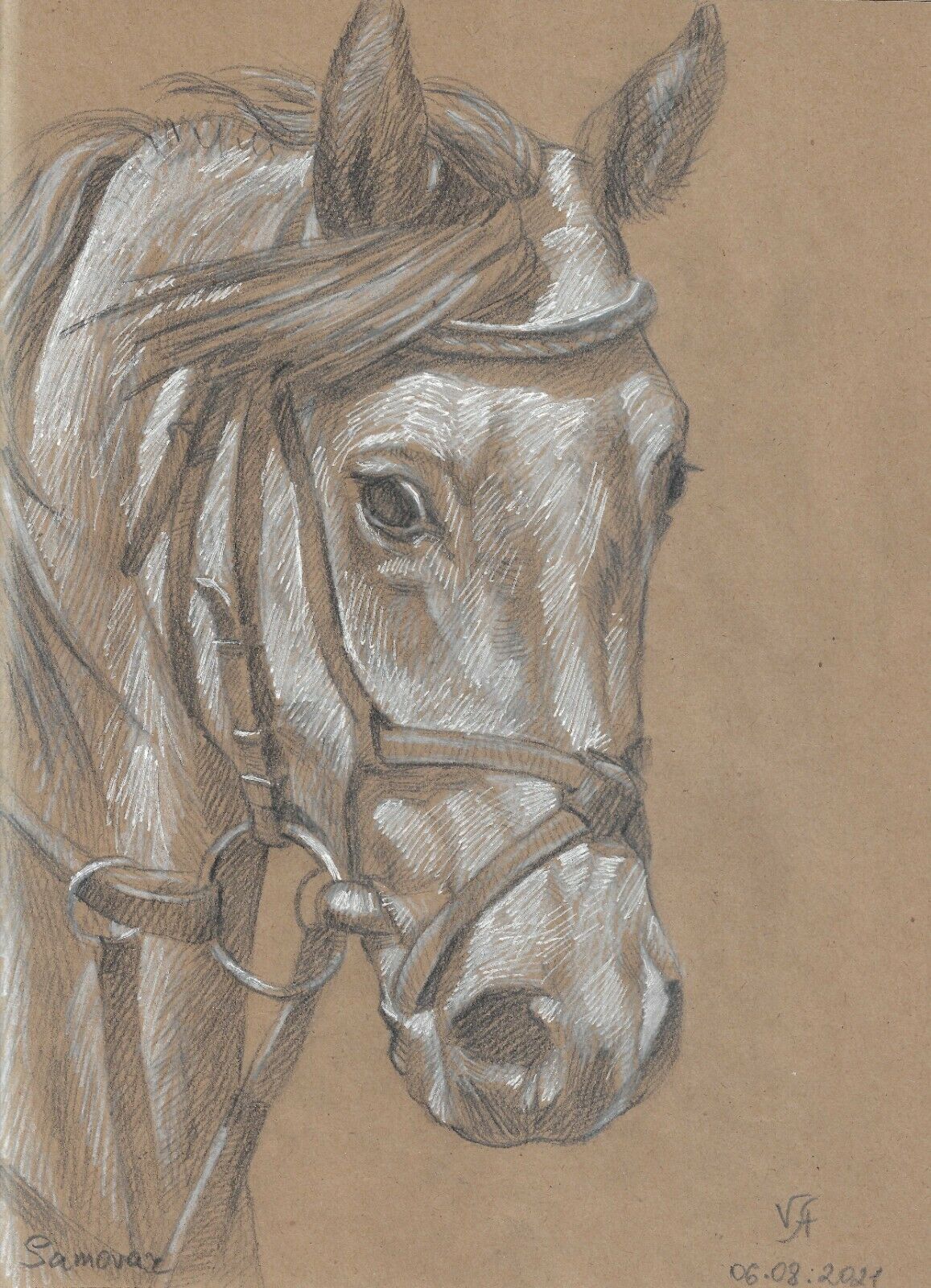-40%
Original Costume Sketch Hedy Lamarr Hand Signed by Star Strange Woman 1946
$ 25.87
- Description
- Size Guide
Description
ITEM: This is a 1940s vintage, one-of-a-kind costume design by Natalie Visart for Strange Woman starring Hedy Lamarr. This unique item shows a corseted top and wide skirt with buttons running down the front, and also features a detail of the top itself with notations. It is greyscale in watercolor and pencil, and is notably initialed and signed by Hedy Lamarr who acted as producer as well as actress for the picture, indicating that the has okayed the costume for use in the production.Measures 19" x 23" on artist's paper.
Guaranteed to be 100% vintage and original from Grapefruit Moon Gallery.
More about Hedy Lamarr:
A major star under contract with MGM during the 1930s and 1940s, Hedy Lamarr gained international notoriety thanks to her taboo-breaking performance in the Austrian-made drama "Ecstasy" (1933), which featured the actress fully nude - practically unheard of at the time. Lamarr later made her way to Hollywood and began appearing in a number of pictures, most notably "Algiers" (1938), "I Take This Woman" (1940), "Ziegfeld Girl" (1941), "Boom Town" (1940) and "White Cargo" (1942). Despite her popularity and the success of her films, Lamarr was pegged as an actress of limited abilities and was therefore often cast as the desirable woman of mystery, which perfectly suited her strikingly dark exotic looks. In fact, she was hailed as the "world's most beautiful woman." Despite that moniker, Lamarr gave a strong performance in King Vidor's "H.M. Pulhan, Esq." (1941), proving that she could deliver the goods if offered a good script and steady direction. After appearing in "The Conspirators" (1944) and "Her Highness and the Bellboy" (1945), her contract with MGM lapsed and she entered a career decline. Her only major highlight was starring in Cecil B. DeMille's epic "Samson and Delilah" (1949), though she failed to capitalize on that movie's huge success. In the mid-1950s, Lamarr unceremoniously left the showbiz and the spotlight, only to garner headlines for shoplifting in 1965 and again in 1991. In between, she released a lurid autobiography, Ecstasy and Me (1966), only to sue her ghostwriter for alleged inaccuracies, while facing fines for failure to pay back taxes and filing a false rape claim. While Lamarr's inability to register emotion on camera may have ultimately doomed her career, her undeniable good looks allowed her to reasonably portray femme fatales and achieve a kind of glamorous screen mortality.
Born on Nov. 9, 1913 in Vienna, Austria, Lamarr was raised by her father, Emil, a prominent bank manager, and her mother, Gertrude, a pianist. She began taking piano lessons when she was 10 years old, and was discovered as a teenager by director Max Reinhardt, who employed her as a script secretary and bit player. Lamarr made her first feature appearance in the Austrian-made "Geld auf der Strasse" (1930), but created an international sensation with her performance in Gustav Machaty's erotic drama, "Ecstasy" (1933). The young actress broke several taboos of the time, appearing nude in a 10-minute swimming sequence while her face was shown in extreme close-up while in the midst of an orgasm - widely hailed as the first depiction of such ever filmed in a non-pornographic film. Amidst longstanding rumors that the orgasm was not so simulated, Lamarr later alluded in her autobiography, Ecstasy and Me (1966), that the claims were not exactly untrue, thanks to her co-star employing a method style of acting. Meanwhile, the 19-year-old Lamarr married ammunitions tycoon, Fritz Mandl, a controlling man 13 years her senior who refused to let her continue acting and bought all the copies of "Ecstasy" that he could find.
During her time with Mandl, Lamarr frequently attended business meetings with him where the mathematically inclined actress learned a great deal about military technology, which proved useful later in life. Meanwhile, she tired of being controlled by Mandl - who also turned out to be a Nazi sympathizer - and fled to Paris in 1937, where she obtained a divorce. Lamarr later met Louis B. Meyer in London. So smitten was he by her exotic beauty that she soon found herself in the United States making her Hollywood debut in "Algiers" (1938), which caused a sensation with audiences who had not witnessed glamour of this magnitude in years. Audiences could fully understand why, after co-star Charles Boyer pleads with her to "Come with me to de Casbah," he dies trying for one final glimpse of his lost love. Her debut a smash, she made her first movie with MGM, "Lady of the Tropics" (1939), before starring opposite Spencer Tracy in the drama "I Take This Woman" (1940). Billed as "the world's most beautiful woman," Lamarr offered little beyond her exotic looks to a host of productions, mostly at MGM, and was often typecast as a woman of mystery. She had her chance to become a major star, only to reject the leading roles for "Casablanca" (1942) and "Gaslight" (1944), both of which helped make Ingrid Bergman as household name.
But Lamarr continued making popular films, starring with Tracy, Clark Gable and Claudette Colbert in "Boom Town" (1940), and appearing opposite Gable again in King Vidor's lighthearted spy flick "Comrade X" (1940). She next played an Austrian who marries a starving writer (James Stewart) for convenience, only to find love anyway in the romantic comedy "Come Life with Me" (1941), and delivered one of her finest performances as an independent-minded woman who bucks the idea of being a traditional wife in Vidor's "H.M. Pulhan, Esq." (1941). That same year, she appeared opposite James Stewart, Judy Garland and Lana Turner in the musical "Ziegfeld Girl" (1941) and followed with one of her more popular films, "Tortilla Flat" (1942), which was adapted from John Steinbeck's anecdotal novel of the same name. In "Crossroads" (1942), she was the new bride of a French diplomat (William Powell) who's the victim of an extortion plot, while in the toned-down "White Cargo" (1942) she had one of her more popular performances as an African native who uses her libidinous ways to drive a rubber plantation manager (Richard Carlson) to ruin. Though extremely campy, the film remained one her most remembered, as well as containing her most memorable entrance, seductively purring, "I am Tondelayo."
Despite her rather limited accomplishments onscreen, Lamarr was one of the few stars - perhaps even the only one - who became a noted inventor. In 1941, she used the knowledge gained from her time with Mandl and helped formulate the idea of a frequency-hopping, spread-spectrum invention with avant-garde composer George Antheil, which they patented in 1942. The idea, which employed the method of rapidly switching radio frequencies, was proposed to the U.S. Navy as a means to prevent jamming or detection of radio-guided torpedoes, though the military rejected the idea. Nonetheless, their frequency-hopping idea later served as the basis for spread-spectrum communication technology, and was incorporated into some wireless devices. Onscreen, she starred opposite William Powell in "The Heavenly Body" (1944), Paul Henreid in "The Conspirators" (1944) and George Brent in "Experiment Perilous" (1944). After the tender romantic comedy "Her Highness and the Bellboy" (1945), her contract with MGM ended and allowed her to work with other studios. Meanwhile, she was on to her third husband, actor John Loder, after having a brief affair with Spencer Tracy during "I Take This Woman" and a short marriage to producer Gene Markey. Lamarr married Loder in 1943 and divorced him in 1947.
Though free to choose any studio project that she wanted, Lamarr found herself nearing the cusp of her decline. After the big budget thriller "The Strange Woman" (1946), she starred in the rather forgettable melodrama "Dishonored Lady" (1947). By this point, Lamarr's career was in serious trouble. Regardless, Cecil B. DeMille cast her as the biblical temptress in "Samson and Delilah" (1949), her most commercially successful film and the only real evidence that she could convey the promise of sex - not just beauty - on the screen. Unfortunately, the wildly successful epic failed to revive her career, though she did star in the rather entertaining "Casablanca"-like noir, "A Lady without Passport" (1950). Following "Copper Canyon" (1950), the aging sex symbol appeared opposite Bob Hope in "My Favorite Spy" (1951), after which she left Hollywood for Europe and did not act again in America until "The Story of Mankind" (1957). Lamarr gave it her all in "The Female Animal" (1958), despite a lack of a strong script and sure-handed direction, leading to her unceremonious departure from making movies. But that did not mean she stayed out of the spotlight. After going through three more husbands - band leader Ted Stauffer (1951-52), Texas oilman W. Howard Lee (1953-1960) and divorce attorney Lewis J. Boles (1963-64) - Lamarr was accused of shoplifting a pair of slippers from a Los Angeles department store in 1965, which led to a whirlwind of bad press. The charges were later dropped.
The following year, Lamarr released her autobiography, Ecstasy and Me (1966), a deliberate attempt to revive her notoriety that contained a number of distasteful anecdotes that prompted her to sue her ghostwriter for misrepresentation. In 1971, she accused a repairman for the Los Angeles School District of trying to rape her, but he turned around and sued her for causing his false arrest, leading the court to order Lamarr to pay him ,000 in damages. Meanwhile, her numerous lawsuits against her ghostwriters failed, and the state of California sued her for ,000 in back taxes it claimed she owed. Her name at least made it back to the big screen in Mel Brooks' Western spoof, "Blazing Saddles" (1974), which featured a character Hedley Lamarr (Harvey Korman) inadvertently referred to by other characters as Hedy. Of course, Lamarr threatened to sue and Brooks settled out of court. She spent the ensuing years living in relative peace and quiet until 1991, when she again was arrested for shoplifting. This time she was caught taking .48 worth of items from a Florida drugstore. She pleaded no contest and the charges were again dropped. Lamarr spent the remainder of her days living in seclusion - brought about from being legally blind - in Casselberry, FL, where she died of natural causes on Jan. 19, 2000 at 86 years old. It was only after her death, that she was given credit for helping create wireless technology that made cell phones possible.
Biography From TCM | Turner Classic Movies
